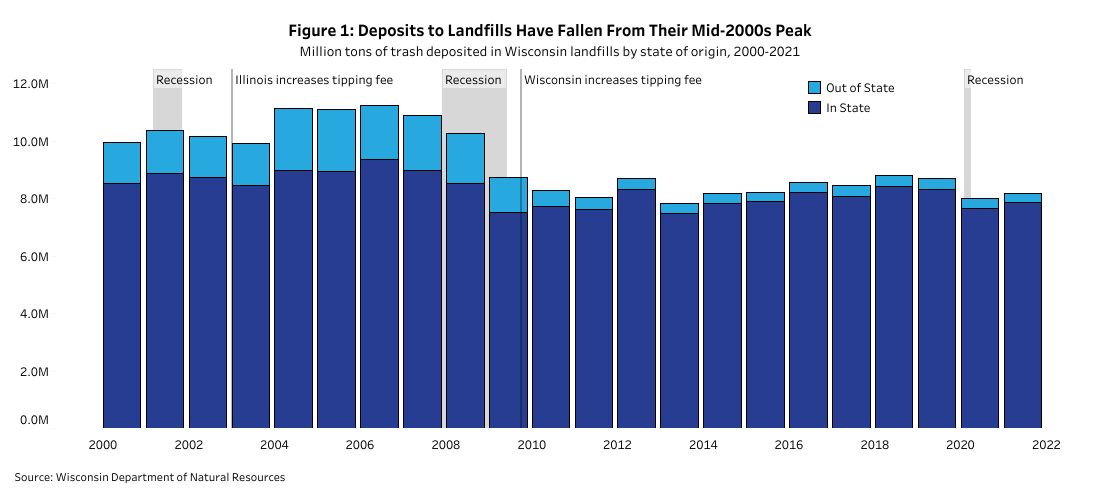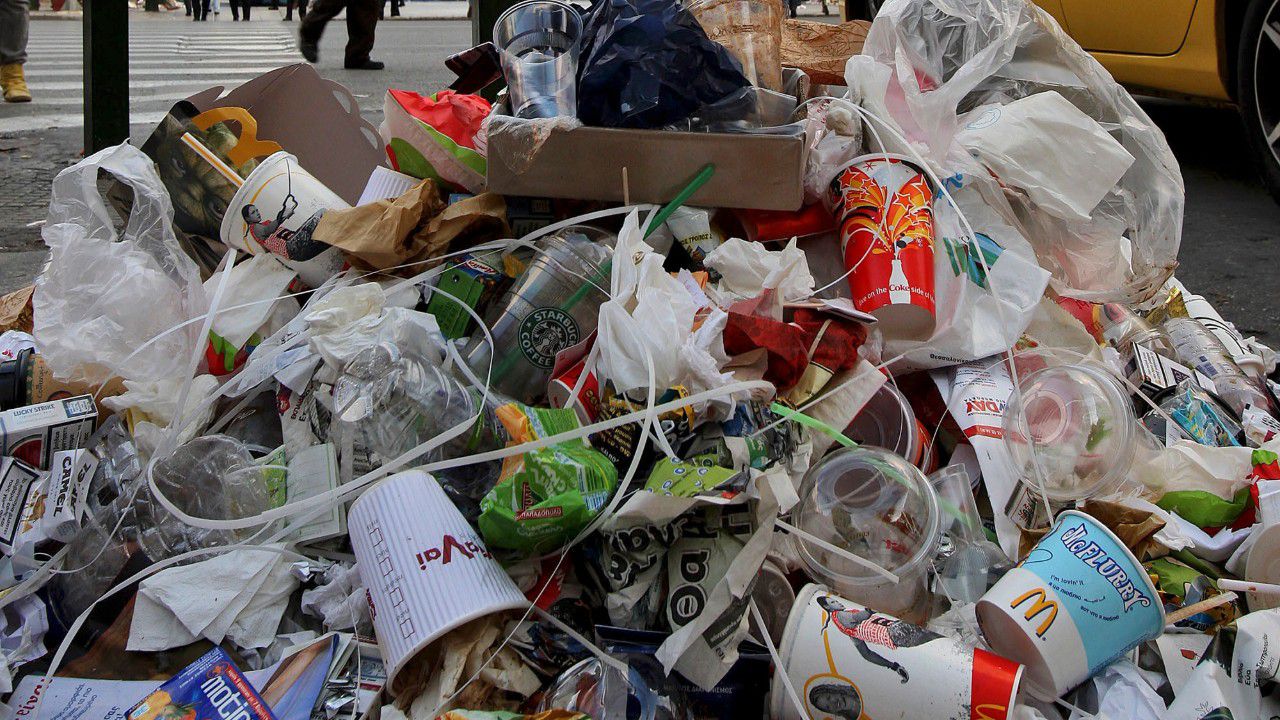WISCONSIN — Wisconsinites are creating less trash than in years past, according to a report by Wisconsin Policy Forum.
The amount of trash left in Wisconsin landfills fell by more than 3 million tons between 2007 and 2021. It’s an amount that could fill Lambeau Field about halfway to the top, according to the report.
At first glance, the numbers look stable in recent years, but that is not the case when you look at the amount of garbage per person. In 2020, that amount fell to 1.37 tons, the lowest it’s been in at least two decades. While that number upticks to 1.39 tons in 2021, it’s still the third-lowest per person amount since 2000.
There are a number of reasons for this. Wisconsin Policy Forum officials said changes in state fees for landfill deposits, impacts from recessions and a greater focus on reducing waste are a few of the reasons for the decrease.
However, this decrease does not mean the state doesn’t still produce a “massive” amount of trash.

How much trash does the state produce?
Municipal waste is the main form of trash. It includes curbside pickup, construction and demolition waste. Over the years, the amount of municipal trash has followed similar patterns to overall trash in the state. It peaked before the Great Recession, bottomed out in 2013 and then climbed slightly.
Wisconsin created about 8.2 million tons of trash in 2021, which is about a 2.1% increase from the year prior. It cost close to a half billion dollars to take care of 2021’s trash or recycle it. State fees for waste on average also generate about $75.5 million per year in state revenue for environmental cleanup and recycling programs.
These fees are one of the reasons trash collection has declined.
State fees increase
For nearly every ton of trash delivered to landfills, the state imposes charges known as “tipping fees.” They’re paid directly by landfill operators, who then pass it down as a gate charge to waste haulers — those who take trash from homes and businesses to disposal sites. Then, the haulers pass a portion of those fees onto consumers through collection fees or private contracts.
The revenue from these fees goes toward Wisconsin’s environmental fund, which helps support grants for recycling programs, cleanup of contaminated sites and more.
In Oct. 2009, this fee more than doubled, going from $5.90 to $13 per ton. Following this shift, there was a “dramatic drop in landfill deposits,” according to the report. This was especially true for out-of-state deposits, which went from 1.7 million tons between 2000 and 2008 to an average of 441,000 tons per year since 2009.
Wisconsin Policy Forum said the decrease in these deposits is a big reason why overall deposits have declined in Wisconsin.
Fees for solid waste in Illinois also played a role in Wisconsin’s trends. Illinois increased the fee from 95 cents per ton to $2.22 per ton in 2003. Multiple landfills in northern Illinois also closed. This resulted in more out-of-state waste being sent to Wisconsin and less waste being shipped to Illinois. However, the larger fee increases in the Badger State quickly reversed this trend, leaving the state with landfill deposits that were lower than they were in 2002.
Recession reduces consumption
During the Great Recession, construction fell dramatically due to the housing market crash. It caused a chain reaction that also reduced waste from construction and demolition. This type of waste bottomed out in 2013.
In recent years, construction waste has risen as the housing market has rebounded.
Production was also affected by the Great Recession, leading to a decline in industrial waste. This trend has continued in recent years, declining by nearly 50% since 2007.
Wisconsin Policy Forum points to the drop in manufacturing activity in the state as a reason for this. Employment in the sector dropped by nearly 80,000 jobs in 2009. Since then, it hasn’t returned to prior levels.
Consumers are also now more conscious of searching for sustainable products. This has led to shifts in the industry, with more working to reduce their waste.
Contrary, an increase in recycling was not a part of this. In fact, total recycling has declined since 2007. Between 2000 and 2009, an average of 722,000 tons were recycled per year. This decreased to an average of 686,000 tons in the years since.
How does this impact the state?
Across Wisconsin, the amount of landfill capacity being used each year has declined, meaning landfills are bringing in less revenue.
Despite losing some revenue, the slower pace can help lower long-term costs and provide more time for landfill operators to find and fund additional sites.
Wisconsin Policy Forum officials said it can be controversial to find new space for landfills after one fills up. That’s because landfills have a large environmental impact on local air and water quality. They also impact property values and development potential. Landfills also come with substantial costs for construction.
Loss in revenue due to the slower pace also carries over to the state environmental fund. Officials said policymakers could look at increasing fees again but warned it could lead to further reductions in deposits. While that might be a good thing, they said it would halt a revenue increase, working against the exact reason for raising fees.
“State and local governments will have to be conscious of fiscal impacts related to declining waste streams, as these fees can fund priorities like contaminated land cleanup, groundwater protection, and recycling,” the report said.



